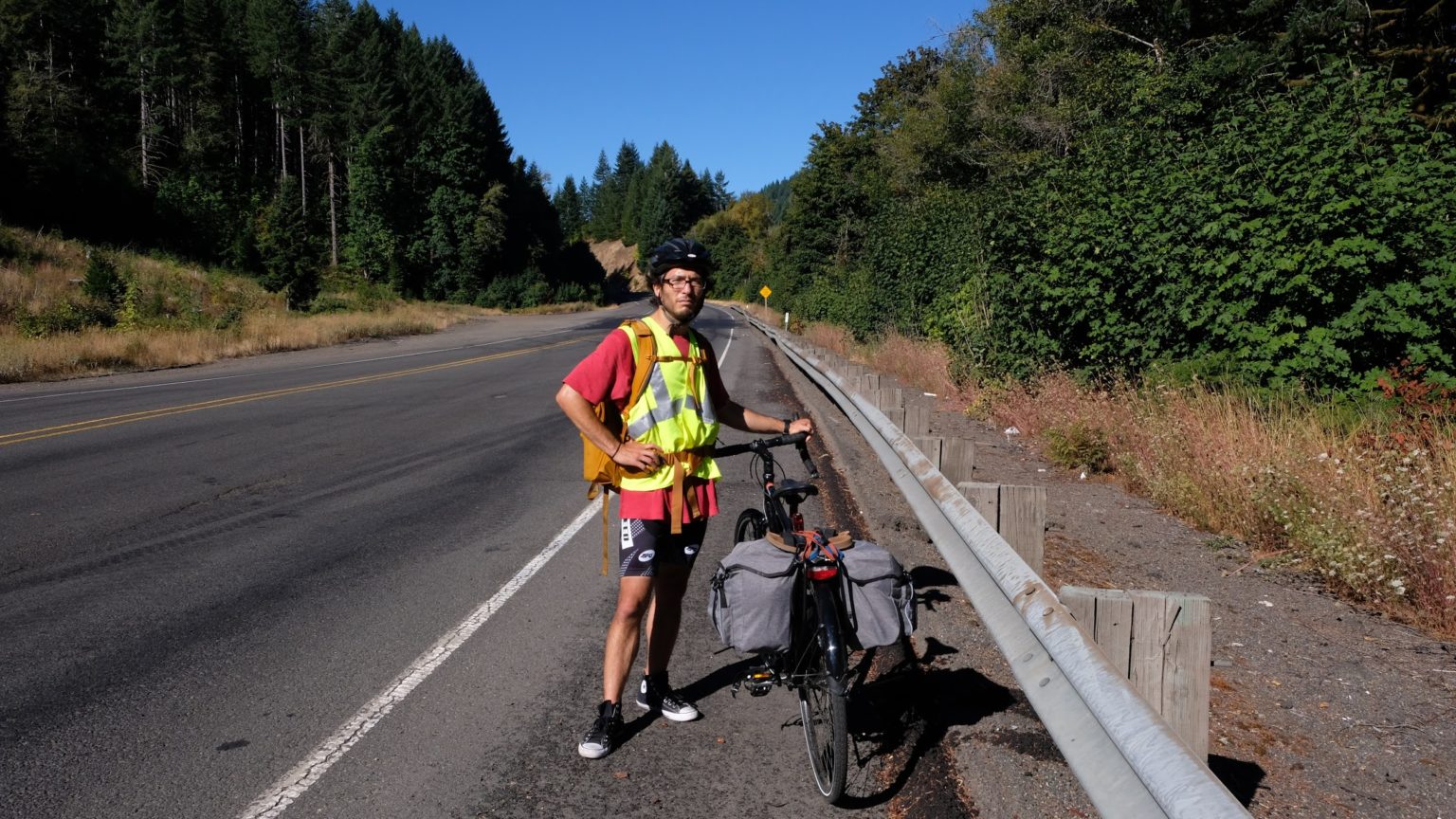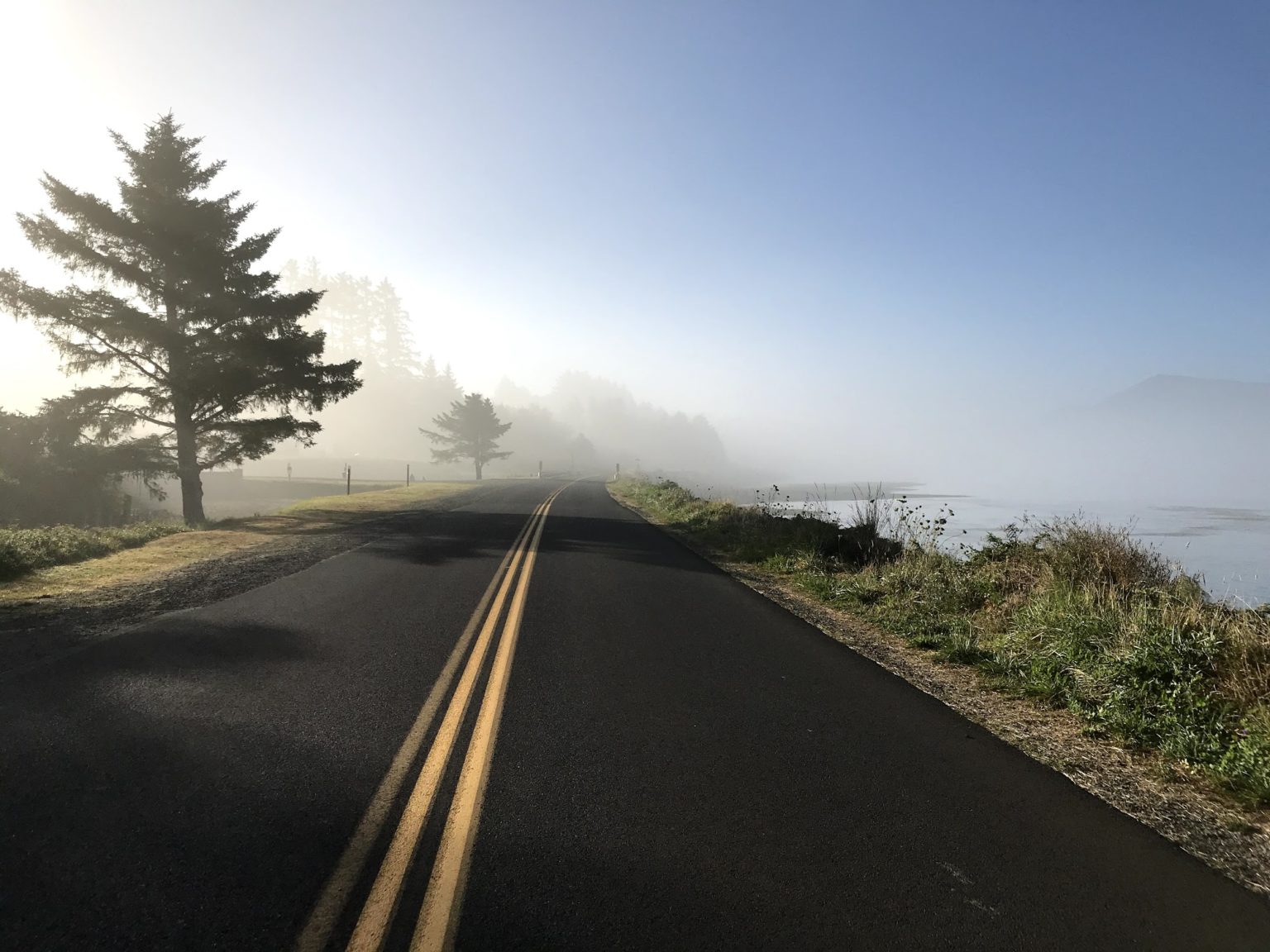Join us in this three-part series as we bike 800 miles down Oregon and California, exploring the impacts of COVID and climate change in coastal communities. This series focuses on stories of people, place, and change.
We were biking a towering cliff, a 300-foot drop to rocky shores and cold waters.
Low railing on our right was all that separated us from a downward tumble. On our left, cars zipped along a single lane, semi-trucks and RVs flew past, each one blowing a powerful wind that pushed us closer to the edge.
This part of Oregon’s Highway 101 lacked a shoulder for bicyclists. When we heard a revving engine approach from behind, we gripped our handlebars, gritted our teeth, and waited for them to blast by.
When we told people we were biking 800 miles from Portland to San Francisco, we got one of two reactions: “That’s awesome!” or “You must be crazy.”
Now that we’re out here, I get the feeling it’s a little of both.
The idea for the trip came because we wanted to learn more about the effects of COVID-19 and climate change on coastal communities.
This route was both geographically and culturally close to home. Doing this journey on bikes would have a smaller carbon footprint, afford us a closer view of the communities we visited.
It’s only been a week, and the journey has changed our perspectives. We live in a city where using a car is the dominant means of transportation, our sedentary lifestyles only broken up by dancing and the occasional hike.
Now, mileage isn’t just a number on a sign, it’s something we traverse with our own bodies. Cars seem faster than we remember–and louder. Food and water don’t just get us through the day, they’re necessary fuel for the ride.
Even our perceptions of people have changed.
Before the trip, I was worried our bright yellow vests, biking shorts, and bulging packs might attract unwanted attention. Would people see us as dangerous because we’re outsiders? Would they see us as carriers of the virus?
But every place we’ve stopped, people have been open and friendly. More than anything, they’re curious.
“How far are you biking?”
That’s usually how it starts.

The tight lanes of Highway 101 opened to a viewpoint overlooking the Pacific. We hopped from our bikes, leaned them against the stone wall perimeter of the parking lot.
Lilly pulled a lemon poppyseed scone and an oatmeal sugar cookie from her pack. A friendly barista at a cafe had given them to us; he said he’d done long-distance biking before and knew what it was like to be hungry on the road.
I leaned my hands onto the wall and looked over the edge, at the sheer drop below. From here, from my stationary safety, the white foam and sharp rocks didn’t seem as scary.
The road we’d just biked stretched along the cliffside, distant, steep, narrow. An RV barrelled along, almost scraping against the guardrail as it took a tight curve.
Did we really just come from there?
We munched on the sugar cookie, passed it back and forth as we surveyed the horizon. The road stretched out ahead, and we still have far to go.

APPLYING “CHANGING PERSPECTIVES” IN THE CLASSROOM:
Human Geography is about understanding our place in the world. There are many different ways to live, and even making small changes to your routine can help you understand these differences.
You don’t have to bike 800 miles to change your perspective, you can discover something new right where you are!
- • Write a short story, create a note for a friend, or eat a meal using only your non-dominant hand.
- • Try to go an entire day sitting in new physical locations–find a different chair, sit on the floor, or do your homework someplace new. Even a small move can make big changes!
- • Create a short (1-2 minute) documentary about a day in your life but tell it from a documentarian’s point of view. View your day from an outside perspective and see what you find!
Assessment Questions: How did this exercise change your daily routine? How can adjusting our space or actions affect how we view ourselves and others?
The Samples You Want Without The Wait!
Copyright 2017 | National Geographic Learning Product News and Resources | AP® is a trademark registered and/or owned by the College Board, which was not involved in the production of, and does not endorse, this product. | “National Geographic”, “National Geographic Society” and the “Yellow Border Design” are registered trademarks of the National Geographic Society ®Marcas Registradas.
